All the Ways We See Lightning
By Jon Engelsman
February 15, 2018
The history of humankind's fascination with understanding lightning.
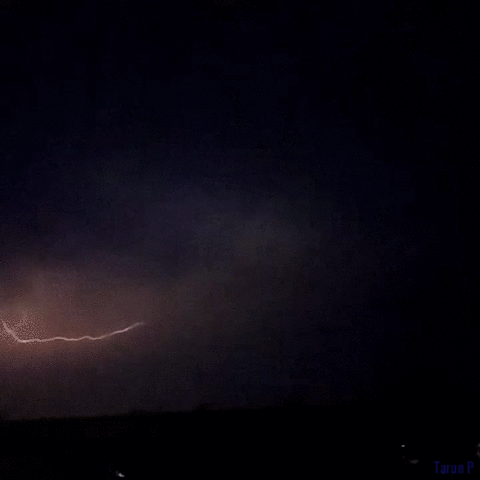
“Brief as the lightning in the collied night; That, in a spleen, unfolds both heaven and Earth, And ere a man hath power to say "Behold!" The jaws of darkness do devour it up. So quick bright things come to confusion.”
A Midsummer Night's Dream, William Shakespeare
Lightning
Lightning has long captivated humankind as a force of nature, destruction and beauty. The mystery of its action and cause has been attributed to many high-ranking gods in various mythologies over the arch of humanity.
But it wasn’t until the mid-1900’s that the beauty of lightning was first frozen in time to better understand its form and function.
Lightning in a Bottle
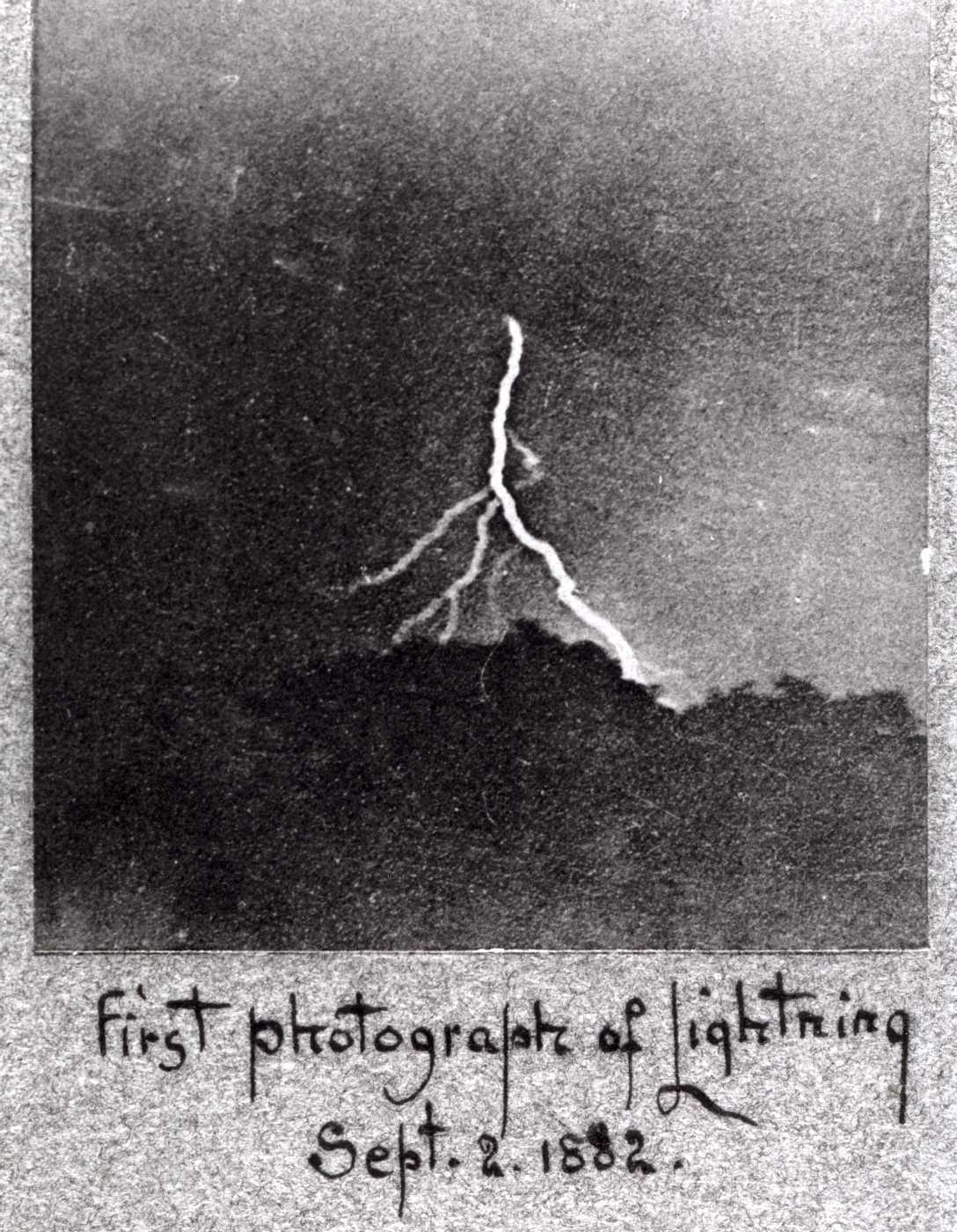 Hyperallergic
Hyperallergic
William N. Jennings, an amateur photographer, was trying to figure out if all lightning had the characteristic “zigzag” shape when he took what is often credited as the first ever photograph of lightning in 1882. For more than fifteen years, he photographed lightning of all shapes and sizes, providing scientists of the time with previously unavailable detail on the structure of lightning.
While Jennings boldly proclaimed to be the first, others had been attempting similar feats using the developing photography technologies of the day, like this daguerreotype taken by T.M. Easterly in 1847.
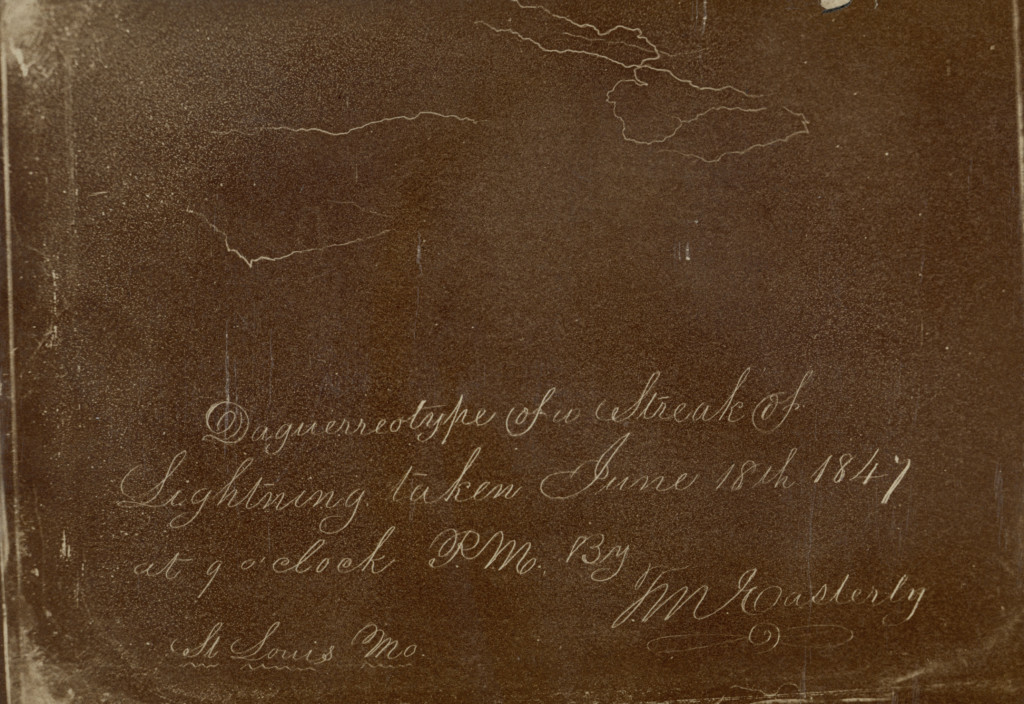 Journal Panorama
Journal Panorama
Modern Art
In either case, these images represented a huge step forward in humankind’s ability to better understand the phenomena of lightning. One hundred and fifty years later, lightning photography is both relatively common place and in some cases, elevated to a fine art.
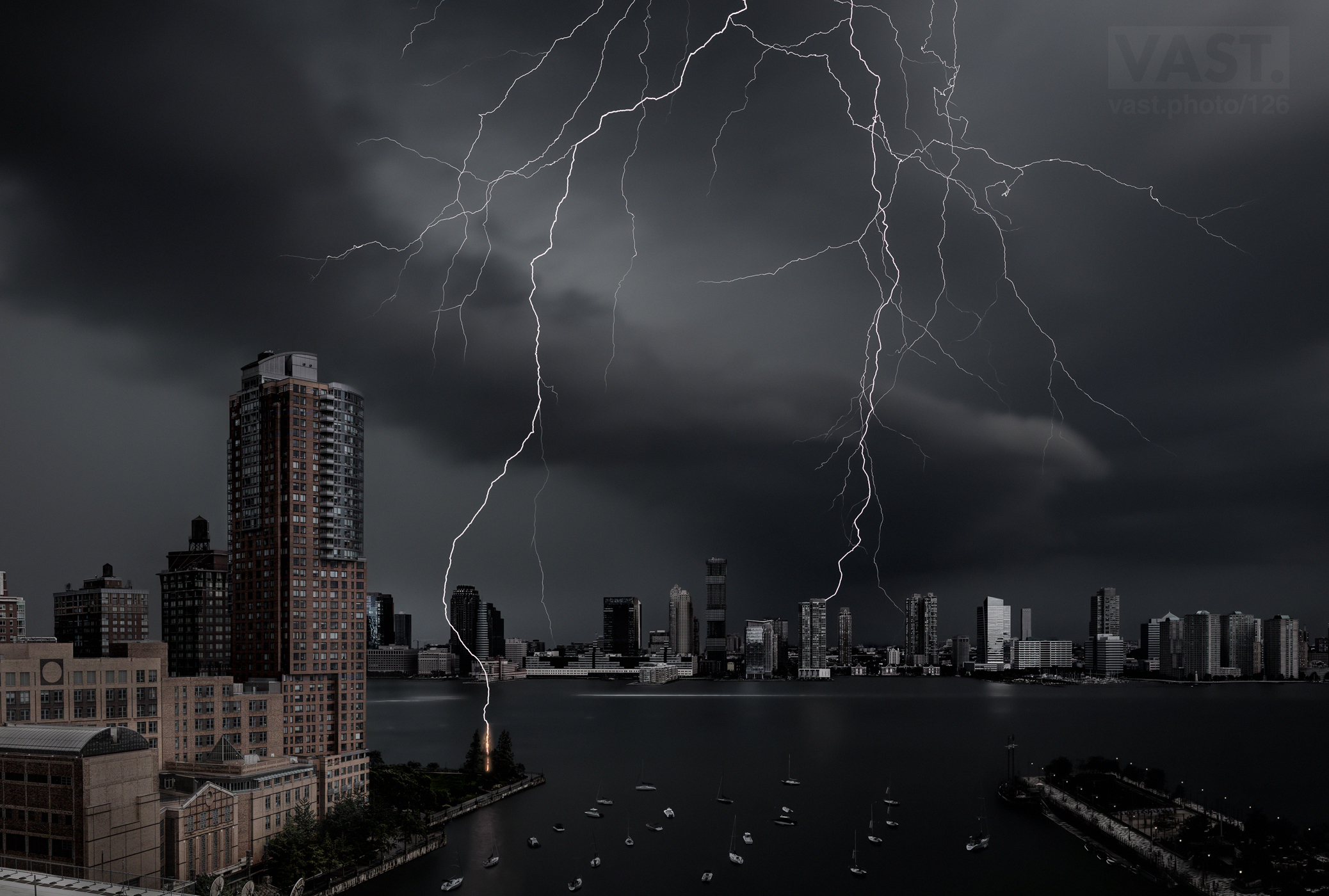 Vast
Vast
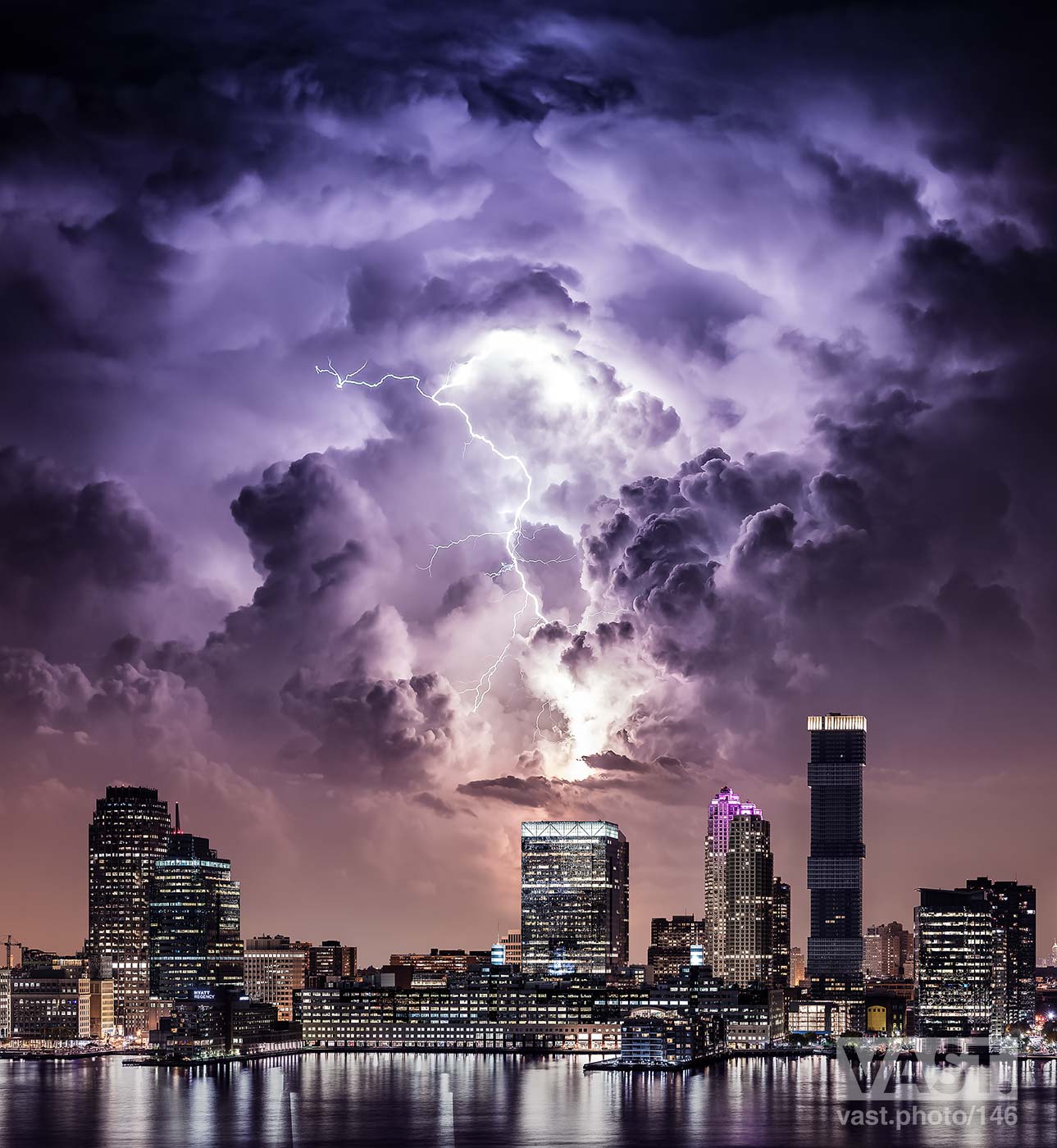 Vast
Vast
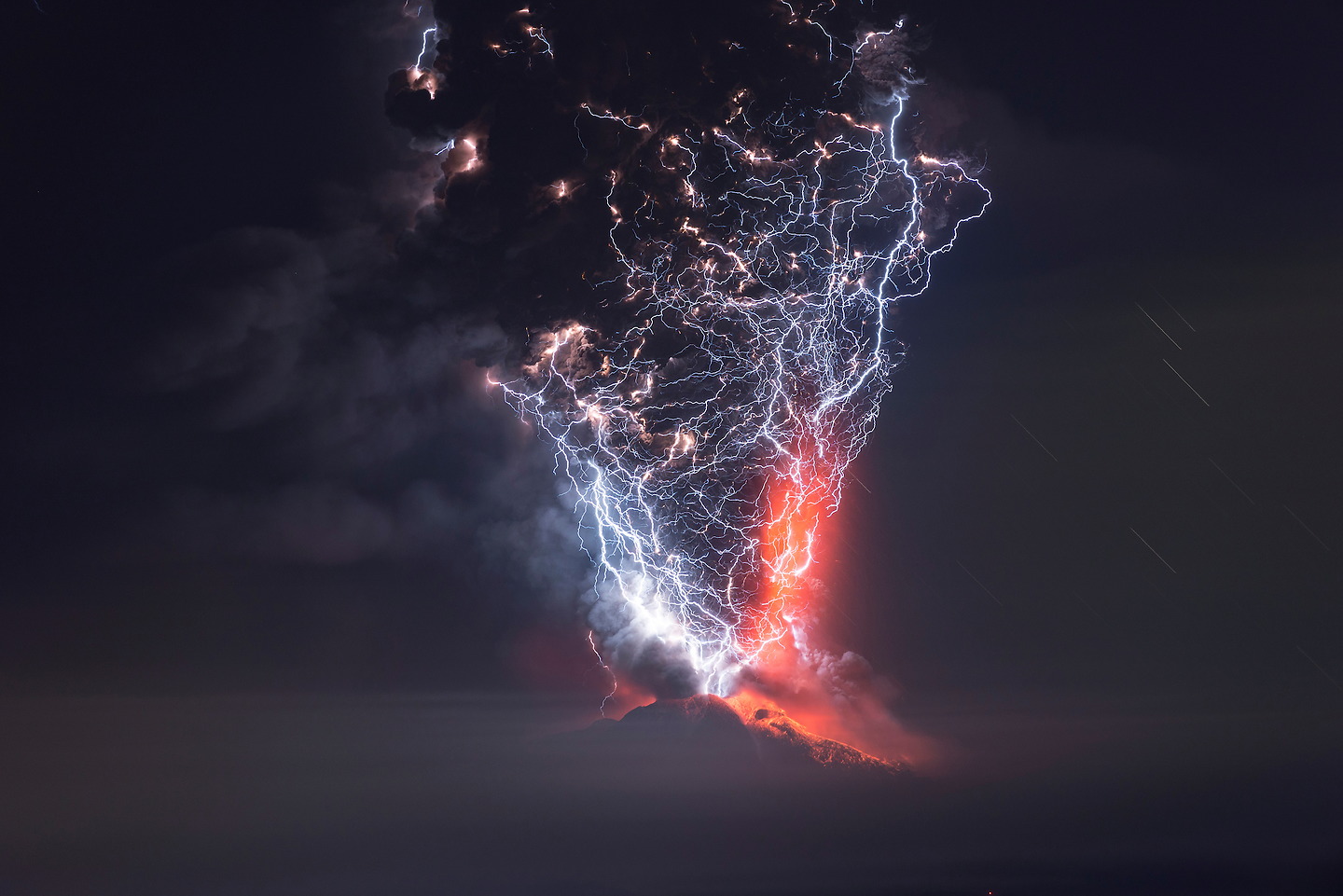 Francisco Negroni
Francisco Negroni
Advances in high-speed video cameras have even let us see the sequence of events in a lightning flash with incredible detail.
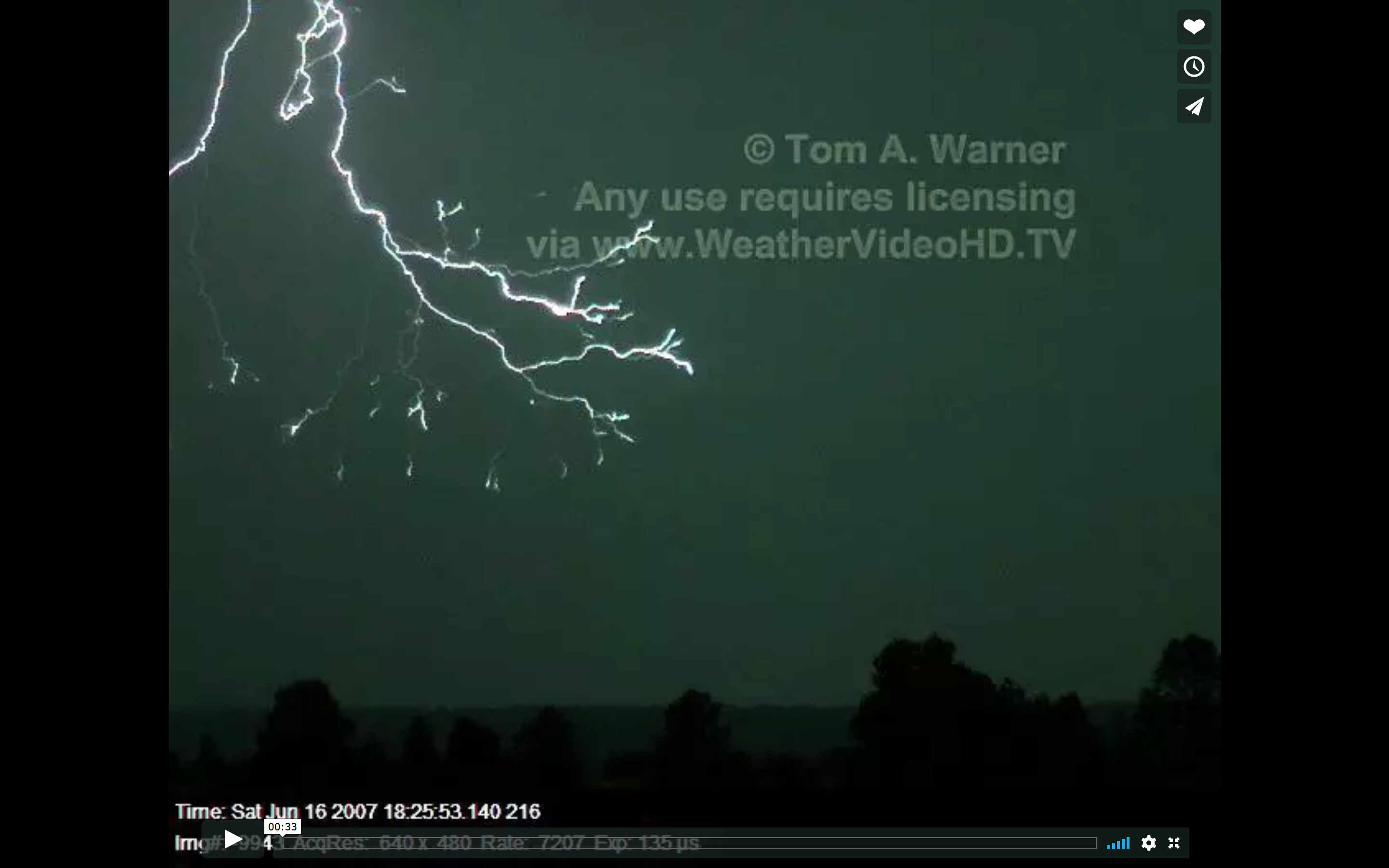
Modern photography and videography are offering unprecedented levels of definition and detail for art and science, helping us better appreciate and understand the complexity of lightning flashes.
Light from a lightning strike is one thing, but where there’s lightning, there’s thunder!
Listen…Did You See That?
Flash………Bang. Ten seconds. Divide by five. That lightning flash you just saw happened about two miles away. (Divide by 3 to get kilometers!)
Many people who grow up in areas with thunderstorms learn this basic rule of thumb, known as the “Flash-to-Bang” method. The simple premise is that light travels faster than sound, so we see the lightning flash before we hear the thunder. And since we know roughly how fast sound will travel through the atmosphere, we can use this knowledge to estimate the distance to the lightning flash, the source of the thunder.
Lightning causes thunder because as the lightning bolt jumps through the atmosphere, it heats up the surrounding air molecules, roughly five times hotter than the temperature of the sun. This causes the air to expand, but when the lightning bolt stops, the air immediately begins cooling, causing the air to contract. This expansion/contraction of air molecules is the source of the sound wave that we hear as thunder.
But thunder isn’t the only thing created by a lightning bolt that we can detect.
Static in a Storm
For as long as humans have been awed and cowed by the power of lightning, it wasn’t until the 1750’s that we established a link between lightning and the nascent scientific theories of electricity, as perilously performed by Benjamin Franklin and his infamous kite experiments. And it was another one hundred years after catching lightning on the wing that the publication of Maxwell’s equations in the 1860’s formalized the connections between electricity and magnetism, leading to a new world full of radio waves.
It was the combination of these discoveries that led scientists to realize that while lightning produces thunder we can all hear, it also emits a telltale signature of radio waves. And at roughly the same time that the Italian Giglioni Marconi was pioneering radio transmissions in the 1890’s, a Russian contemporary named Alexander Popov was using similar methods and equipment to detect those radio waves created by lightning, developing the world’s first lightning detector in 1895.
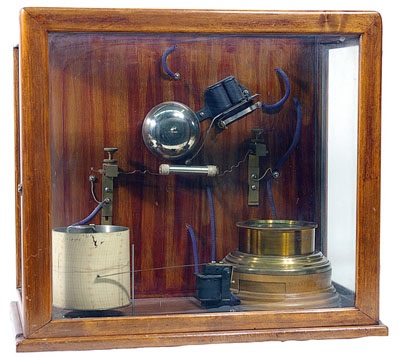
Lightning Location Systems
Fast forward a hundred years, and humans have now covered the globe with state-of-the-art lightning detection sensors, modern-day ancestors of Popov’s invention.
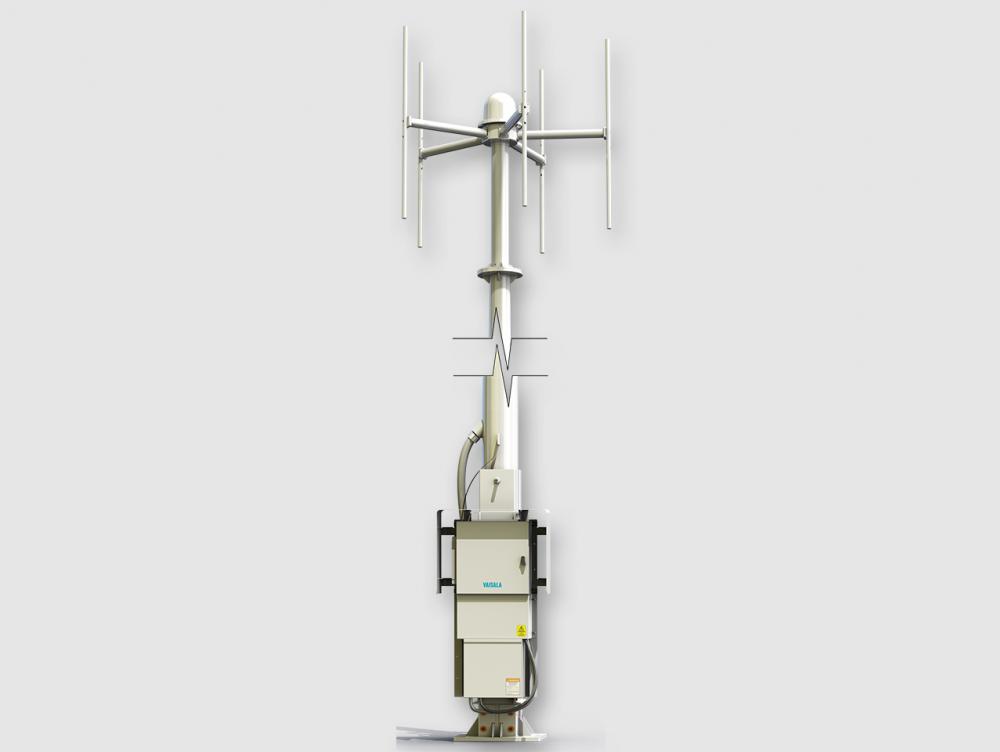 Vaisala
Vaisala
These lightning location systems (LLS) use distributed arrays of lightning detection sensors that identify the telltale radio pulses of a lightning strike. When more than one sensor sees the same lightning strike, the LLS network can estimate the location of the lightning strike using time-of-arrival (TOA) techniques, not unlike the “Flash-Bang” method but using radio waves instead of thunder. Modern lightning detectors also incorporate Magnetic Direction Finding (MDF) methods in determining the location of a lightning strike.
These sensors can even analyze the radio wave signature time series to better understand the flow of electricity during the lightning strike (strokes, discharges, peak amperages, etc).
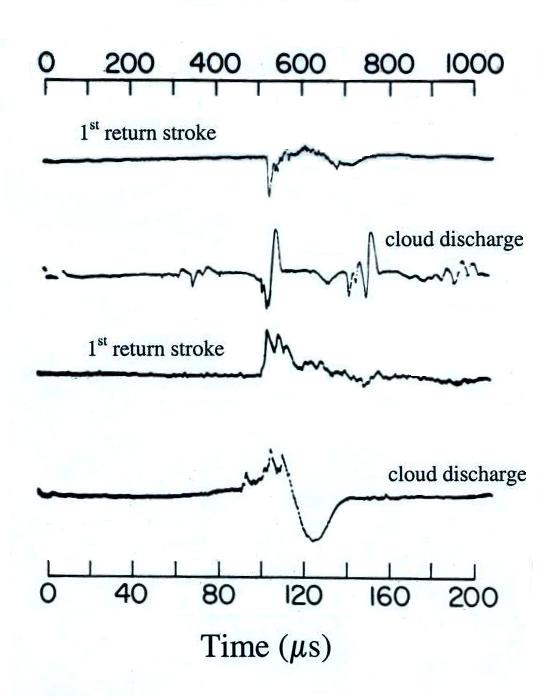 The University of Arizona / Hydrology & Atmospheric Sciences
The University of Arizona / Hydrology & Atmospheric Sciences
One of the oldest continuously operating LLS is the U.S. National Lightning Detection Network (NLDN), operated by the Finnish company Vaisala. Founded in the 1930’s, Vaisala expanded into the lightning detection market with the acquisition of French company Dimensions SA in 2000 and US company Global Atmospherics in 2002.
Vaisala also produces national lightning density maps, which shows the annual average lightning strike density over the entire country. These types of maps are created using the historical data of lightning strike locations from their LLS network.
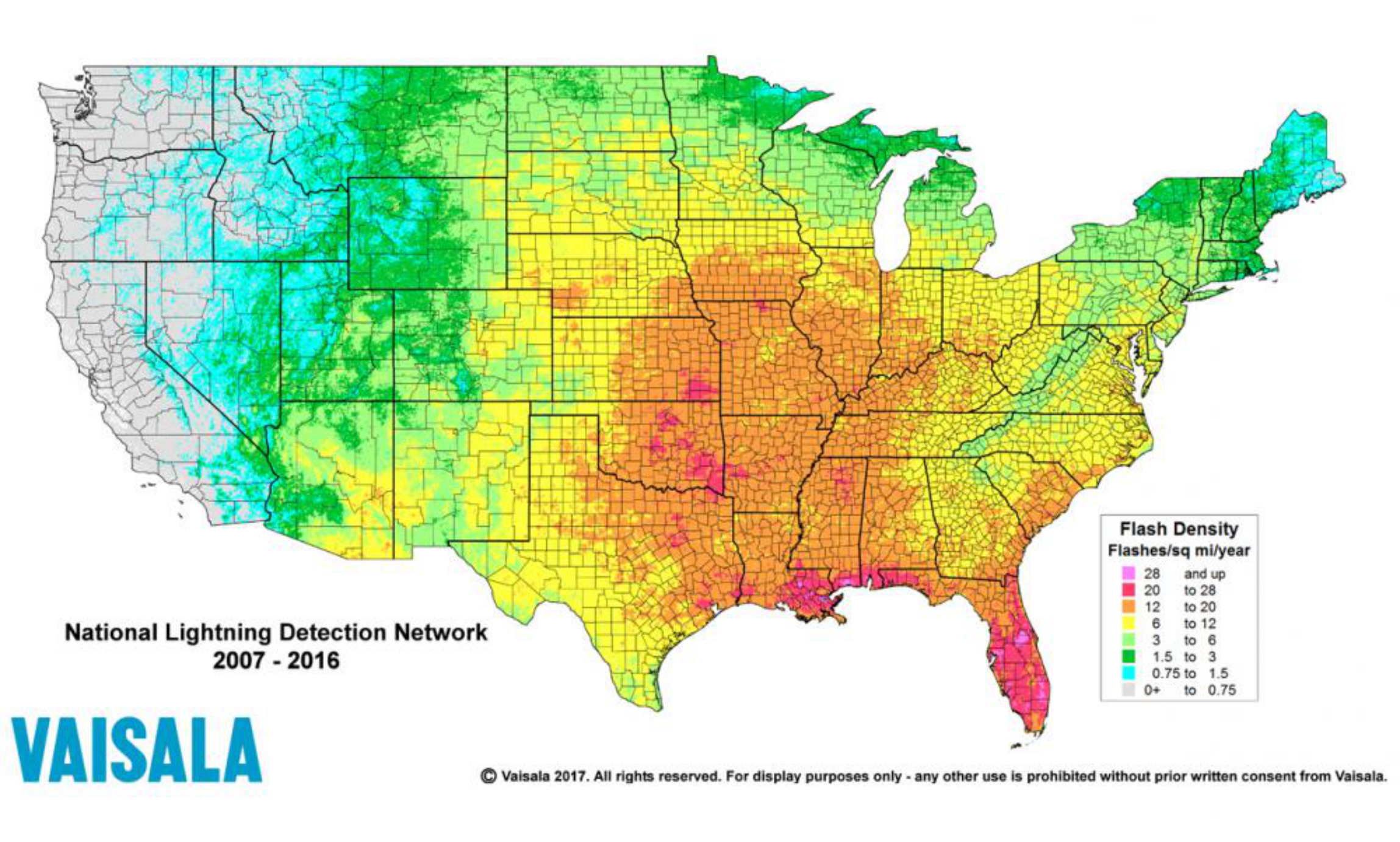 Vaisala
Vaisala
There are actually multiple LLS networks operating in the United States and around the world. Earth Networks, U.S. company founded in 1993, operates another large U.S. LLS called the Earth Networks Total Lightning Network (ENTLN).
Bird’s Eye View
Not only are we taking photos of lightning flashes from the ground, listening to thunder claps and measuring the radio wave emissions of lightning strikes, but we’re also seeing flashes from outer space!
The Space Shuttle had been involved in lightning research since its earliest launches in the 1980’s, including lightning observations from the Night/Day Optical Survey of Lightning (NOSL) mission and later with the Mesocale Lightning Experiment (MLE).
Eventually, satellites with instruments dedicated to lightning observations started orbiting the Earth. Orbview-1 (aka MicroLab-1) launched in 1995 with the Optical Transient Detector (OTD). This instrument provided the world’s first broad-area lightning imagery and produced global lightning strike data.
 NASA/Global Hydrology Research Center
NASA/Global Hydrology Research Center
The Tropical Rainfall Measuring Mission (TRMM) satellite launched in 1997 with the Lightning Imaging Sensor (LIS), providing even more lightning observation data.
 NASA/Global Hydrology Research Center
NASA/Global Hydrology Research Center
And recently, NOAA’s GOES-R series of satellites (starting with GOES-16 launched in 2016 and GOES-17 in 2017) are now orbiting the Earth, each with a Geostationary Lightning Mapper (GLM) instrument, the first lightning imagery mappers in geostationary orbit.
These satellites are providing unprecedented levels of detailed lightning observations, and have led to some beautiful videos of lightning storms.

Similarly, time-lapse photos of the Earth taken from the International Space Station (ISS) have shown some beautiful lightning storms.
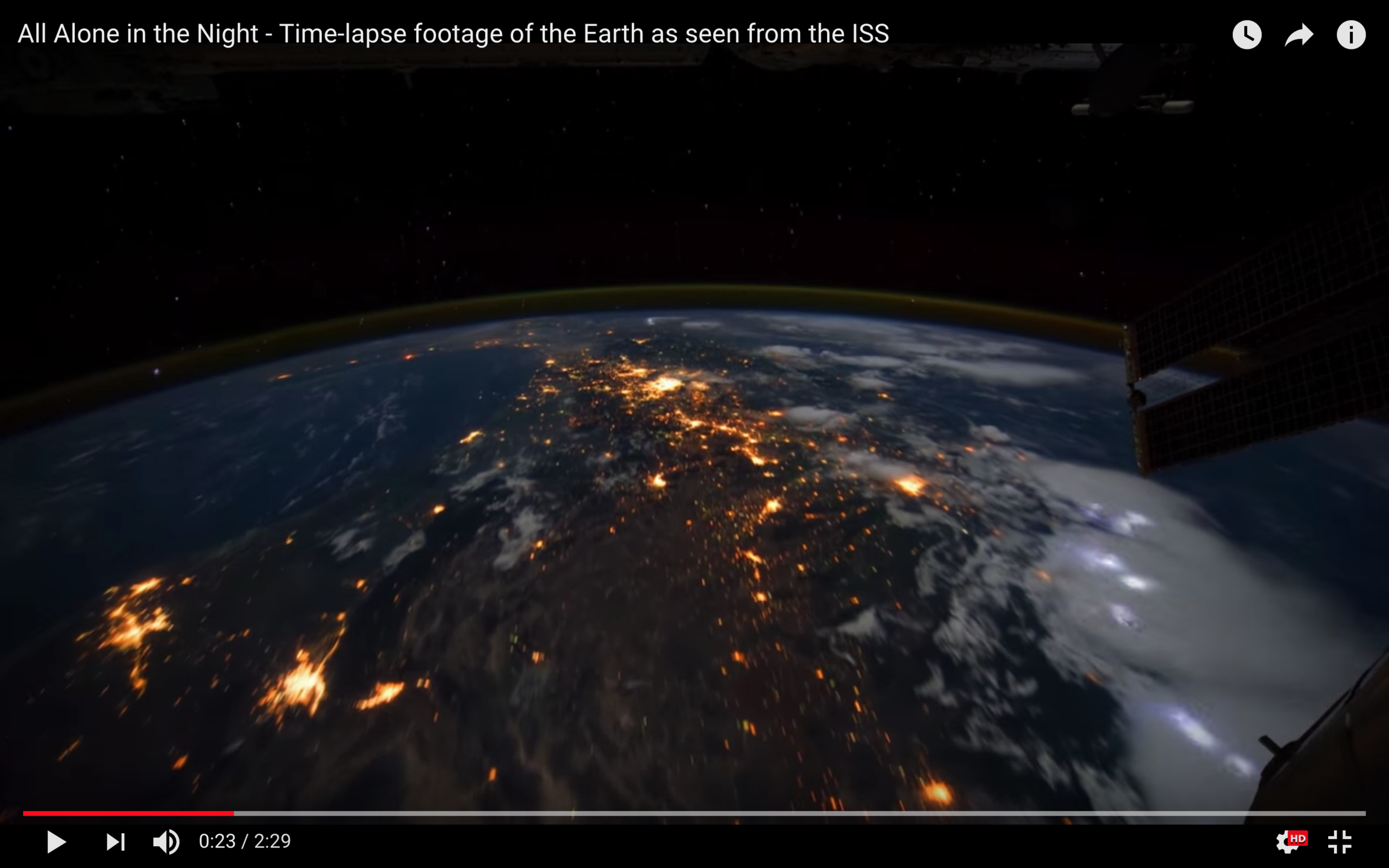
But another copy of the LIS instrument was actually launched to the ISS in 2017 to provide additional lightning measurements. The Lightning Imaging Sensor on ISS (LIS On ISS) mission will be used to help calibrate the GOES-R GLM instruments and will provide even more global lightning observation coverage.
Other current and future lightning observation missions in space include the European Space Agency’s series of Meteostat Third Generation (MTG) satellites with the Lightning Imager (LI) instrument and China’s series of FengYun-4 (FY-4) satellite with their own Lightning Mapping Imager (LMI) instruments.
Lightning in Time
When humankind took the first photograph of lightning, a single lightning bolt was frozen in time. Now, some one-hundred and thirty years later, our near global coverage of both land-based lightning location systems and space-based instruments is teaching us more than ever about the lightning dynamics of our planet.
- Posted on:
- February 15, 2018
- Length:
- 7 minute read, 1291 words
- Tags:
- lightning
- See Also:
- When Lightning Strikes